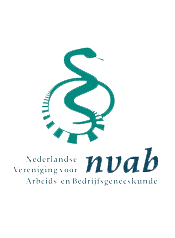Your patient is a 55-year-old furniture factory worker with occupational asthma due to isocyanate exposure. His pulmonary physician states that his asthma is getting worse the last few years. His employer complains that he has been a lot on sick leave. The patient himself denies these statements, says he is feeling well and wants to continue his job. Below is a short summary of a recent Cochrane review including a general background on workplace exposures and how various workplace interventions could help workers with occupational asthma.
Background
Occupational asthma that is caused by workplace exposures, and work-exacerbated asthma that is preexisting or concurrent asthma that is worsened by workplace exposures or conditions are called together work-related asthma. A review of relevant literature concluded that 16.3% of adult-onset asthma cases are attributable to occupation. This is likely an underestimate of the true frequency. For example, it appears that many physicians take inadequate occupational histories from their asthma patients and do not refer suspected cases to occupational medicine or pulmonary physicians for additional evaluation. Occupational asthma agents include both sensitizers and irritants and can have a distinct immunologic response.
Workplace interventions to deal with occupational asthma
Workplace interventions to improve the status of workers who have occupational asthma either include early removal from exposure or reduction of exposure. Removal from exposure includes substitution of causal agents or complete removal from exposure. Reduction of exposure includes changing the work process; relocation of the affected worker to another work area with less exposure; implementation of educational programs designed to prevent or reduce exposure, and adaptions in personal protective equipment. However, the actual benefits of these interventions are still unclear. We identified an update of a relevant Cochrane review of 2011 that aimed to determine the effectiveness of workplace interventions for the treatment of occupational asthma (Henneberger et al 2019). In this review extensive searches were performed in several databases up to July 31, 2019.
What was studied in the review?
The Cochrane review by Henneberger et al (2019)1 is based on 26 non-randomized controlled before and after studies including 1,695 participants with occupational asthma. Sensitizers caused nearly all cases. The review focuses on the interventions of removal from exposure and reduction of exposure, which were compared with continued exposure. Outcomes were changes in asthma symptoms, lung function, and non-specific bronchial hyperreactivity between baseline and follow-up.
Main results of the review
The studies reported on complete removal from exposure and reduced exposure. Reduction of exposure was achieved by limiting use of the agent, improving ventilation, or using protective equipment in the same job, by changing to another job with intermittent exposure, or by implementing education programs. The quality of the evidence is very low for all outcomes due to the lack of randomization. It is likely that the patients with worse symptoms were more often removed from exposure.
If nothing was done, and exposure continued, only 5.6% of the workers were without symptoms at follow-up. They had a further decrease in FEV1 % (forced expiratory volume in one second as a percentage of a reference value) of 5.4% during follow-up, and they had a further increase in non-specific bronchial hyperreactivity (NSBH) (standardized mean difference (SMD) = -0.18).

Analysis 1.3. Comparison 1 Removal from exposure versus continued exposure, Outcome 3 Change in FEV1% predicted: follow-up minus baseline values.
-
Removal from exposure may have a considerable effect compared to the situation that exposure is continued (18 studies). Removal may help to increase absence of asthma symptoms, with risk ratio (RR) 4.80 (95% confidence interval (CI) 1.67 to 13.86), and it may improve asthma symptoms, with RR 2.47 (95% CI 1.26 to 4.84), compared to continued exposure. Also FEV1 % may improve with a mean difference (MD) of 4.23 % (95% CI 1.14 to 7.31) compared to continued exposure. NSBH may improve with removal from exposure, with (SMD) 0.43 (95% CI 0.03 to 0.82).
-
Reduction of exposure may also improve the situation comparedto continued exposure (7 studies). Reduction of exposure may increase absence of symptoms, with RR 2.65 (95% CI 1.24 to 5.68) but the decrease in FEV1 % was not significant with MD 2.76 % (95% CI -1.53 to 7.04) . No studies reported or enabled calculation of change in NSBH.
-
Removal from exposuredoes not always lead to a larger effect than only reduction of exposure (10 studies). because none of the outcomes were significant: reporting absence of symptoms RR 6.05 (95% CI 0.86 to 42.34), improvement in symptoms, with RR 1.11 (95% CI 0.84 to 1.47), FEV1 %, with MD 2.58 % (95% CI −3.02 to 8.17). However, with all three outcomes, there may be improved results for removal from exposure in the subset of patients exposed to low molecular weight agents.
-
The risk of unemployment after removal from exposure was reported in two studies. Authors reported that removal compared with reduction of exposure may increase unemployment, with RR 14.28 (95% CI 2.06 to 99.16). Four studies reported a decrease in income of 20% to 50% after removal from exposure.
Key messages / Implications for practice
Care providers should balance the potential clinical benefits of removal from exposure or reduction of exposure with potential detrimental effects of unemployment.
Advice for 55 year old furniture factory worker
Your patient is a 55 year old furniture factory worker who will certainly benefit from occupational health measures. It is best to follow the hierarchy of controls approach here.
First check if exposure can be eliminated and isocyanate can be eliminated from the production process. If that is not possible propose to have the worker transferred to another department without the exposure. If this is not possible, he will probably lose his employment, given his age and education with a subsequent decrease in income. Therefore, as a last resort, he might benefit from education and personal protective equipment as the review shows that there is still considerable improvement possible with these measures. Based on shared decision-making, he could be offered a one year trial period of improving his work environment, better use of PPE and education about preventing exposure while his symptoms and lung function is closely monitored. If the outcome is that these measures are not sufficient we have to decide that this worker cannot be replaced in this factory, despite the consequences for his income.
Prevention by good work environment, education and personal protective equipment could have prevented this situation.
Reference
Henneberger PK, Patel JR, de Groene GJ, Beach J, Tarlo SM, Pal TM, Curti S. Workplace interventions for treatment of occupational asthma. Cochrane Database of Systematic Reviews 2019, Issue 10. Art. No.: CD006308. DOI: 10.1002/14651858.CD006308.pub4.
Cochrane news
Cochrane Insurance Medicine: 5-year Anniversary and symposium in Basel 2020
Ten years ago, the University of Basel established the Clinical Professorship of Insurance Medicine, Evidence-based Insurance Medicine (EbIM), to promote the production of evidence in insurance medicine. Five years later, this chair founded the Cochrane Insurance Medicine (CIM) field with partners from the Netherlands, Sweden and Canada. Both activities made important contributions to professionalizing insurance medicine in Switzerland and Europe and paved the way for an insurance medicine based on clinical research that informs practice.
Unless posted otherwise we plan to go ahead celebrating our 5-year existence with an international CIM symposium at Basel University Hospital on Wednesday afternoon the 16th of September 2020. Please check our CIM website for up-to-date information about this milestone event: https://insuremed.cochrane.org/news/our-pre-conference-symposium-eumass-2020). Several international experts plan to present and discuss topics around evidence production and knowledge translation, including contributions by CIM. We are looking forward to welcoming you all in Basel!
EUMASS Congress 2021
Although EUMASS Congress has been postponed till next year, collaborators and researchers involved in Cochrane Insurance Medicine and Cochrane WORK will be present at EUMASS 2021 Congress. We will contribute with both presentations and Cochrane Workshops to present ongoing projects and teach the latest from Cochrane. This includes several workshops including one on the development of a ‘Core Outcome Set for Work Participation’ (an ongoing collaboration project between Cochrane Work and Cochrane Insurance Medicine) and another one on the ‘Development of an Insurance Medicine PubMed email alert’
Cochrane Insurance Medicine and Cochrane Work
Cochrane Insurance Medicine (CIM) and Cochrane Work would like to keep you up to date with developments within Cochrane and evidence-based medicine in the field of Insurance Medicine and Occupational Health. CIM and Work have been supporting each other for almost three years and conducted various collaborative projects, such as joint workshops and presentations at Cochrane Colloquiums, ICOH or EUMASS meetings.
We recognise that even though you may have seen a Cochrane Review before, you may not know exactly what Cochrane is. Cochrane is an independent international not-for-profit organisation, dedicated to making up-to-date, accurate information about the effects of healthcare readily available worldwide. It produces and disseminates systematic reviews of healthcare interventions and promotes the search for evidence in the form of clinical trials and other studies of interventions.
Within the Cochrane Library you can search for systematic reviews and randomised controlled trials of intervention studies, and to a lesser degree also diagnostic studies (http://www.cochranelibrary.com).
Within Cochrane Insurance Medicine and Cochrane Work we aim to promote evidence-based best practices in Insurance Medicine and Occupational Health and to facilitate the production and dissemination of systematic reviews that support health and social care decisions on sick leave certification, disability evaluation, and return to work interventions.
Cochrane Insurance Medicine: http://insuremed.cochrane.org/ .
Cochrane Work: http://work.cochrane.org/
The latest issue of our CIM and WORK newsletters are out
Please see our latest CIM Newsletter https://insuremed.cochrane.org/newsletter and WORK Newsletter https://work.cochrane.org/newsletter. If you want to know what is going on in Cochrane Insurance Medicine and in Cochrane Work, then these newsletters are for you. If you are not yet subscribed, you can join CIM and WORK through these website links above as well.



